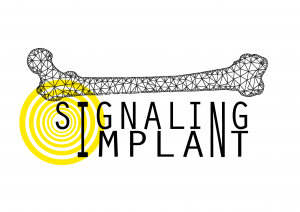Implants signal to bone for bone growth and attachment
Signaling implant aims to advance orthopaedic implants, develop new manufacturing technology and introduce a new quality control method. Design of hydroxyapatite films will orient crystals and position ions within the lattice to generate a surface electrical potential, thereby imparting greater functionality compared to existing bone implants. This responds to the growing need for better osteointegration of bone implants. The effect of surface electrical potential on bacteria, bone cells and bone growth will be evaluated to determine the effect across a range of biological settings. Inclusion of technology enabling SME’s into the consortium will set-out to provide both a new in-situ charging thin film technology and a new electrical field meter, with a capability of mapping the surface electrical potential. Synergy with apatite and biological testing expertise will incrementally provide a feedback loop to advance bioactive apatite and associated technologies.
The Signaling Implant project has received funding by the M-ERA.NET – an EU funded network which has been established to support and increase the coordination of European research programmes and related funding in materials science and engineering.



